 W
WMinamoto no Yoshinaka made his final stand at Awazu, after fleeing from his cousins' armies, which confronted him after he attacked Kyoto, burning the Hōjūjiden, and kidnapping Emperor Go-Shirakawa. During the pursuit he was joined by his foster brother Imai Kanehira.
 W
WIn the First Battle of Azukizaka Oda Nobuhide defeated Imagawa Yoshimoto, setting the stage for his son, Oda Nobunaga, to become one of Japan's greatest warlords. Despite the defeat, later in 1548, Imagawa defeated Nobuhide in the Second Battle of Azukizaka and continued to expand his territory until 1560, when he faced Nobunaga and was killed in the Battle of Okehazama.
 W
WThe battle of Imafuku was fought in late November 1614 between the forces of Tokugawa Ieyasu and the Toyotomi clan. This battle was one of the first of the series of battles fought near Osaka over the course of two years. The village of Imafuku stood on the northeast approach to Osaka, and so Tokugawa Ieyasu sent 1500 men under the command of Satake Yoshinobu to secure the site for a fort. They faced off against 600 men loyal to the Toyotomi "Western Army," under two generals named Iida and Yado.
 W
WThe 1614 battle of the Kizugawa(木津川の戦い) was one of a number of battles surrounding the siege of Osaka, in which the Tokugawa shogunate destroyed the Toyotomi clan, the last major opposition to its control of Japan.
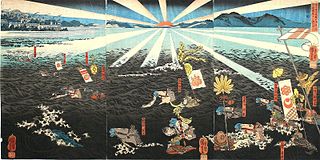 W
WThe Battle of Kojima (児島合戦), also called Battle of Fujito (藤戸の戦い), was a battle of the Genpei War of the Heian period of Japanese history, and took place in 1184.
 W
WThe battle of Mimasetōge (三増峠の戦い) took place in 1569, as the forces of Takeda Shingen withdrew from repeated failed sieges of the Hōjō clan's Odawara Castle in the Kanagawa Prefecture of Japan.
 W
WThe Battle of Nagara-gawa was a battle that took place along the banks of the Nagara River in Mino Province in April 1556. The site of the battle is in present-day Gifu city, Gifu Prefecture, Japan. It was a battle between Saitō Dōsan and his son, Saitō Yoshitatsu, who had instigated a coup d'etat.
 W
WThe Battle of Sakainehara was fought in 1478 between the forces of Chiba Noritane (千葉孝胤) and the forces of Ōta Dōkan and Chiba Yoritane (千葉自胤). The battle is also sometimes referred to as the Sakainehara Campaign.
 W
WThe 1348 Battle of Shijōnawate (四條畷の戰い) was a battle of the Nanboku-chō period of Japanese history, and took place in Yoshino, Nara. It was fought between the armies of the Northern and Southern Emperors of Japan. The Southern army, led by Kusunoki Masatsura was attacked at Yoshino, the temporary palace of the Imperial residence. Feeling too weak to defend the residence, Masatsura marched out with his whole force to meet his assailants. Kitabatake Chikafusa, meanwhile, led his force towards Izumi, diverting some of the attackers away from the palace.
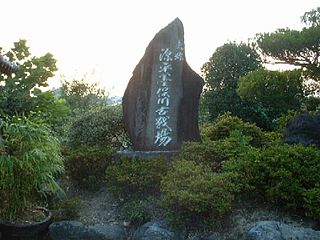 W
WThe Battle of Sunomata-gawa took place in Japan on 6 June 1181, in the present-day town of Sunomata, Gifu Prefecture. The battle started when Minamoto no Yukiie attempted a sneak attack against his enemies during the night. He found Taira no Tomomori and his army directly opposite from his, along the Sunomata River, near the borders of Owari and Mino provinces.
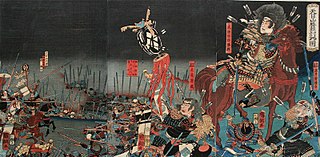 W
WThe 1582 Battle of Tenmokuzan in Japan, also known as the Battle of Toriibata, is regarded as the last stand of the Takeda clan. This was the final attempt by Takeda Katsuyori to resist the combined forces of Tokugawa Ieyasu and Oda Nobunaga, who had been campaigning against him for some time.
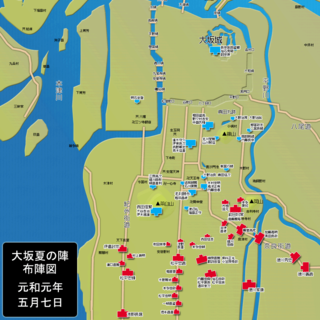 W
WThe Battle of Tennōji was fought in 1615 between the forces of Tokugawa Ieyasu and the forces of Toyotomi Hideyori. Tokugawa was laying siege to Osaka, and Hideyori had planned a counterattack. Both sides were plagued by mistakes until Hideyori's side finally fell. He presumably committed suicide. The Toyotomi army suffered nearly 50% casualties in this battle, with more than 15,000 dead. This was also the final battle of Sanada Yukimura.
 W
WThe Battle of Yahagi-gawa took place in 1181. Retreating from the Battle of Sunomata-gawa, Minamoto no Yukiie attempted to make a stand by destroying the bridge over the Yahagi River and putting up a defensive shieldwall. He was forced to withdraw in the end, but the Taira pursuit was soon called off when their leader, Tomomori, fell ill.
 W
WThe siege of Miki (三木合戦) lasted from 1578 to 1580. Toyotomi Hideyoshi took Miki Castle of Harima Province, located in what is now Miki, Hyōgo, Japan, from Bessho Nagaharu, an ally of the Mōri clan.
 W
WThe 1561 siege of Odawara, a battle of Japan's Sengoku period, was the first of several sieges which would befall the home castle of the Hōjō clan.
 W
WThe second siege of Odawara took place in 1569. Takeda Shingen attacked Odawara Castle, as a response to Hōjō's intervention into Shingen invasion of Suruga Province.
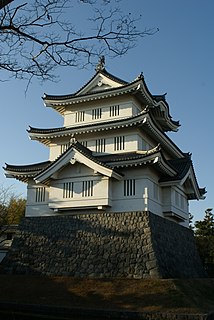 W
WThe 1590 Siege of Oshi was one of many battles in Toyotomi Hideyoshi's campaigns against the Hōjō clan during Japan's Sengoku period.
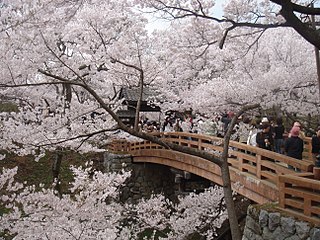 W
WThe 1545 siege of Takatō castle marked the first time Takatō had been besieged. Takeda Shingen, continuing his sweep through the Ima Valley of Shinano Province, seeking to take control of the entire province, defeated Takatō Yoritsugu, the castellan. Takatō had relied on support from his allies, Ogasawara Nagatoki and Tozawa Yorichika, who failed to aid in his defense.
 W
WThe 1600 siege of Tanabe was one of a number of battles which took place in parallel to the more influential series of battles known as the Sekigahara Campaign which led to the unification of Japan under Tokugawa Ieyasu.
 W
WThe sieges of Toishi castle took place during Takeda Shingen's campaign to take over Shinano Province. His army, led by Sanada Yukitaka, began sieging the castle in 1550. The defending lord, Murakami Yoshikiyo, held out until the following year, but his garrison suffered over 1000 casualties, and was ultimately forced to surrender.